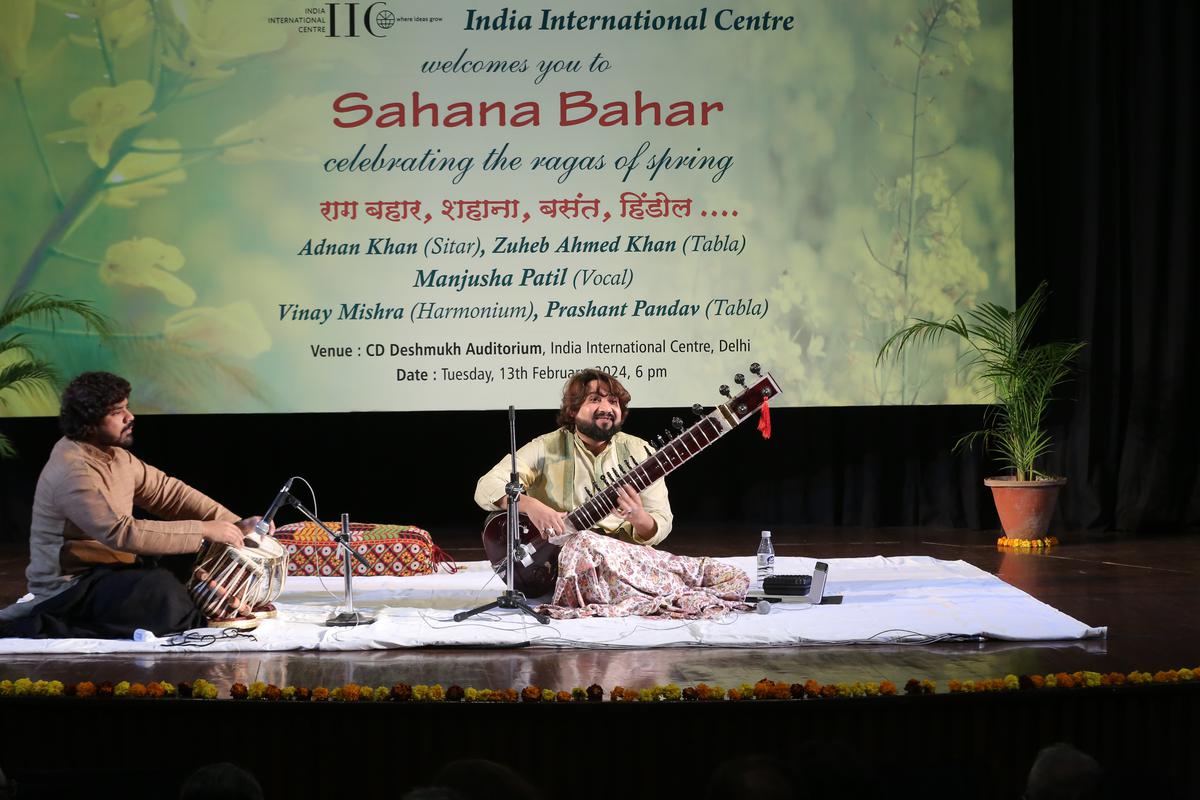The time theory of Hindustani music has classified raags into different ‘prahars’ or time zones from early morning to late night. There are also seasonal raags, such as monsoon or spring ragas that are performed especially during that season.
‘Sahana Bahar’, organised during Basant Panchami in Delhi, focussed on raags of Basant Ritu (spring). Presented by the Navaras School of Performing Arts, Patna, in collaboration with the India International Centre (IIC), Delhi at the CD Deshmukh auditorium of the IIC, it featured raag such as Bahar, Basant, Shahana and Hindol through instrumental (sitar) and vocal recitals.
Conceptualised and introduced by Dr. Ajit Pradhan, founder of Navaras, as “Mausam-e-bahar ke mauqe par, shahana-bahar ka unwaan”, studded with Urdu couplets, the evening opened with raag Shahana (means royal) on the sitar by Adnan Khan, the young sitarist who is connected to the Dilli Gharana from his maternal side and Kirana Gharana from his paternal side. However, his recital seemed inspired by Ustad Vilayat Khan.
Adnan’s introductory aalap captured attention in the lower octave. His imaginative improvisation etched the myriad hues of spring. The jod section featured impressive gamakas and the jhala wove geometrical patterns in a variety of chhands.

Adnan Khan presented the myriad hues of spring through his sitar strings.
Adnan displayed control over Shahana’s swaras in alap-jod-jhala before Zuheb Khan joined him on the tabla for a number of compositions he played in different taals. Starting with a madhya-vilambit Jhaptaal composition, elaborating the raag with restraint and often catching the ‘sam’ from the mukhda itself, Adnan went on to play the famous Teentala bandish of Ustad Amir Khan and the popular Drut Ektaal Gat composition of Ustad Vilayat Khan. He brought alive the signature styles of the Ustads.
It was heartening to see how Adnan has matured over the years, into a performer of distinction. However, he could have avoided the prolonged jet-speed jhala.
Manjusha Patil, a leading Hindustani vocalist of the present generation, took the stage thereafter and opened with raga Basant. At present, a disciple of Ulhas Kashalkar, she has mastered the nuances of the Gwalior, Agra and Jaipur gharanas. Her aesthetic sense and vast repertoire of compositions of these gharanas were evident in her selection of raags and presentation of traditional bandish.
Manjusha opened her vibrant vocal recital with the traditional Basant bandish ‘Nabi ke darbaar sab mil gaavo bajaavo Basant’ set to Tilwada, a favourite for bada khayals in the Gwalior-Agra gayaki. This was followed by the Chhota Khayal ‘Kanha garava lagae’ and the famous Gwalior composition ‘Druma druma lata lata…’ set to Drut Teentaal. She concluded the main raga with a thrilling tarana. She instantly established a rapport with the audience.
Next came the jod-raag Hindol-Bahar. Manjusha sailed through both the raags of contrasting moods, with amazing ease. Singing ‘Mai ri aaj…’ the Madhya-Vilambit (medium-slow tempo) bandish set to Rupak taal, she created the colourful ambience of raga Bahar before taking a seamless turn to enter Hindol.
Manjusha concluded with ‘Aayo fagun maas’ in Bhairavi. She enjoyed the melodious touches of Vinay Mishra’s harmonium but didn’t waver from her imaginative shade of Bhairavi. Prashant Pandav provided unobtrusive accompaniment on the tabla.

COMMents
SHARE